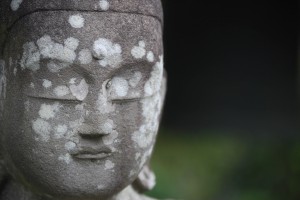 Modern-day Japan seems more at pace with bullet trains than Buddhist meditation, but temples still linger here under gingko trees, and Shinto shrines still peak out from hillsides – reminders of the ancient heart that beats beneath a bustling culture.
Modern-day Japan seems more at pace with bullet trains than Buddhist meditation, but temples still linger here under gingko trees, and Shinto shrines still peak out from hillsides – reminders of the ancient heart that beats beneath a bustling culture.
Although daily practice is slim, most Japanese still claim allegiance to both Buddhism and Shinto, the ancient Japanese worship of the natural world. For those who come looking for it, Zen and the heart of Japan are still very much alive.
Buddhist temples welcome visitors to explore their contemplative gardens. Some take in guests at temple lodgings whether they come to meditate or just spectate.
Koyasan
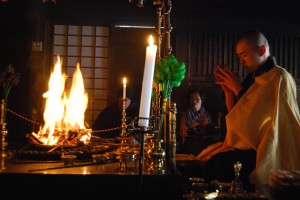 Even for Japanese who no longer practice Buddhism, the town of Koyasan, ringed by a mandala of eight mountains, remains a sacred reminder of Japan’s roots. Set amid dense forests and reached only by cable car, Koyasan is an isolated village of 4,000 people and 110 temples. Practically the only place to spend the night in this seat of esoteric Shingon Buddhism is in temples, which serve as Buddhist bed-and-breakfasts, or shukubo.
Even for Japanese who no longer practice Buddhism, the town of Koyasan, ringed by a mandala of eight mountains, remains a sacred reminder of Japan’s roots. Set amid dense forests and reached only by cable car, Koyasan is an isolated village of 4,000 people and 110 temples. Practically the only place to spend the night in this seat of esoteric Shingon Buddhism is in temples, which serve as Buddhist bed-and-breakfasts, or shukubo.
I show up at the Ekoin temple ignorant of temple protocol, sending a young monk into fits as he struggles to explain to me where I may and may not walk in street shoes (outside OK, inside not OK – not even the front steps) and where I may and may not slip them off (by the door OK, on the rack with the monks shoes not OK).
He leads me to my room, a simple space with sliding doors overlooking a garden, and pours me a pot of green tea. He leaves me the bathrobe, and later, the dinner Koyasan temples are famous for. No meat, no fish, no onions, no garlic. It’s shojin-ryori, temple food. It’s no endless buffet, and I could do without the cold sesame tofu, but the presentation, like the room, is simple, perfectly assembled and beautiful.
After dinner, I stroll into the night to Okunoin cemetery. Japan’s largest, its 200,000 gravestones huddle on a hillside lit with lanterns and perfumed with incense. Shingon’s founder, Kobo Daishi, is said to be resting here in eternal meditation, waiting for the future Buddha to return. With him are the remains of feudal lords, politicians, the prominent and the devout.
Looming cedars above and rows of Jizo Buddha statues below seem to protect the stone pathway as it winds amid the graves. I follow the path to Lantern Hall, where hundreds of lamps burn like souls waiting for the Buddha’s return.
Nara
Established 1,300 years ago, Nara, Japan’s first capital, is a vestige of old Japan. Its park, the Narakoen, fills with gentle deer eager for a handout. Fierce wooden Nio guardians stand ready to pounce on intruders passing through the gate to ancient Todaiji temple. One of Japan’s temple treasures, Todaiji houses Japan’s largest bronze Buddha in what is said to be the largest wooden building in the world.
I’ve planned my visit here for the spring Omizutori festival, a pyrotechnical display, medieval-monk style. For 1,200 years, the monks of Todaiji have raced across the temple balcony hoisting giant torches that rain embers on bystanders below in a purifying blessing by fire: Buddhism meets pyromania.
The festival continues long after the sparks go cold. Inside the temple, monks chant and pray at the foot of Kannon, the 11-headed Buddhist image of compassion. They’ve been at this for 12 days. In the wee hours of this, the 13th day, they draw water from the springs in front of the temple, mix it with water they have gathered each year for 1,200 years and offer it to the bodhisattva.
I join a crowd peering into the temple from outside as drums sound and chants echo within. As a priest passes, he anoints each of us with the water of spring.
Kyoto
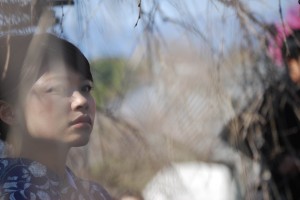 The dichotomy between ancient and modern Japan is sharpest in Kyoto. At first glance dull, dingy and heavy on the concrete, Kyoto gradually reveals itself, as if a portal magically opens into old Japan.
The dichotomy between ancient and modern Japan is sharpest in Kyoto. At first glance dull, dingy and heavy on the concrete, Kyoto gradually reveals itself, as if a portal magically opens into old Japan.
Its Zen pleasures are too many to name. So many temples, so many gardens, each simply beautiful and beautifully simple. The spreading gardens of Nanzenji. The meandering walkways through Eikando. In mid-March, cherry blossoms are just beginning to unfold as I follow the lovely Tetsugaku-No-Michi, the Path of Philosophy, along the canal to the vast Ginkakuji Temple.
Each garden seems perfectly designed for whatever time of year it happens to be. The flowers that tumble onto the moss seem to land exactly where they are supposed to.
My favorite Zen garden is understated Ryoanji, Temple of the Peaceful Dragon, where 15 scattered boulders emerge from the sand garden.
A stone washbasin at the temple sums up the temple’s contemplative simplicity with this Zen inscription: “I study only contentment.”
Zazen
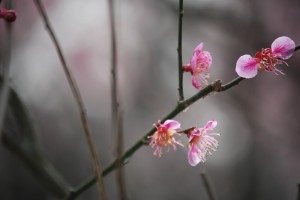 I try to study a little contentment myself. At Kyoto’s Shunkoin Temple, I make reservations for a morning meditation session with the Rev. Takafumi Kawakami. Two others – a woman from England and a man from Germany – join me.
I try to study a little contentment myself. At Kyoto’s Shunkoin Temple, I make reservations for a morning meditation session with the Rev. Takafumi Kawakami. Two others – a woman from England and a man from Germany – join me.
“Have any of you studied Buddhist meditation?” Kawakami asks.
A native of Japan but a graduate of Arizona State University, Kawakami leads us to a simple meditation room overlooking a lovely stone garden and guides us in a 15-minute session of zazen, the simple awareness of breathing in, breathing out. In a few moments, the stresses of travel drift away and I am left with a simple room, a tiny garden and my breath, until the bell brings me back.
“How was that?” Kawakami asks.
Many temples rely on tourists ,who pay to visit their gardens, to keep them afloat. Shunkoin has added to that, welcoming tourists for short meditation sessions or overnight stays. Locals don’t support the temples like they used to, Kawakami says.
In a country where Buddhism is on the wane, tourists help pay the bills.
Nikko
A trek in search of Japan’s Buddhist heritage could stretch from Kyushu in the south, where 1,300-year-old stone Buddhas meditate in a ravine, to the temple complex of Chusonji in the north, built nearly a millennium ago as a Buddhist paradise on earth.
Some of the most stirring sights, though, are a short trip from Tokyo.
Two hours north of Tokyo sits Nikko, a quiet town of Buddhist temples and Shinto shrines. Rinnoji Temple’s Three Buddha Hall hosts the largest wooden Buddhas in Japan. Toshogu sits behind a huge Shinto torii gate where woodcarvings depict the “hear no evil, see no evil, speak no evil” monkeys, old Buddhist icons. A quiet mountain stroll follows a collection of statutes of Jizo, the guardian of children and travelers.
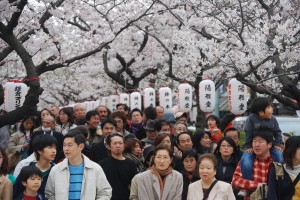 An hour south of Tokyo, the Great Buddha, one of Japan’s most famous landmarks, radiates tranquility among the throngs in Kamakura. Japan’s former capital, this seaside town hosts some 70 temples and shrines. A downtown walkway canopied with cherry trees leads to the lotus ponds and bridges of the sprawling Shinto shrine of Tsurugaoka Hachimangu. Quiet hiking paths wind to the Zen temples of Jochiji, Kenchoji and Zuisenji.
An hour south of Tokyo, the Great Buddha, one of Japan’s most famous landmarks, radiates tranquility among the throngs in Kamakura. Japan’s former capital, this seaside town hosts some 70 temples and shrines. A downtown walkway canopied with cherry trees leads to the lotus ponds and bridges of the sprawling Shinto shrine of Tsurugaoka Hachimangu. Quiet hiking paths wind to the Zen temples of Jochiji, Kenchoji and Zuisenji.
I have the gardens of Hokokuji Temple to myself when the city bus drops me there on my last day in Japan. Of all the temples I’ve seen in Japan, this wooden temple tucked amid manicured gardens seems the most precious. Water tumbles from a fountain. A bamboo grove rattles in the breeze.
I stroll along the path through the bamboo and sit by the fountain. But only for a moment. It’s time to catch the bullet train that will rush me to the airport, and home.

